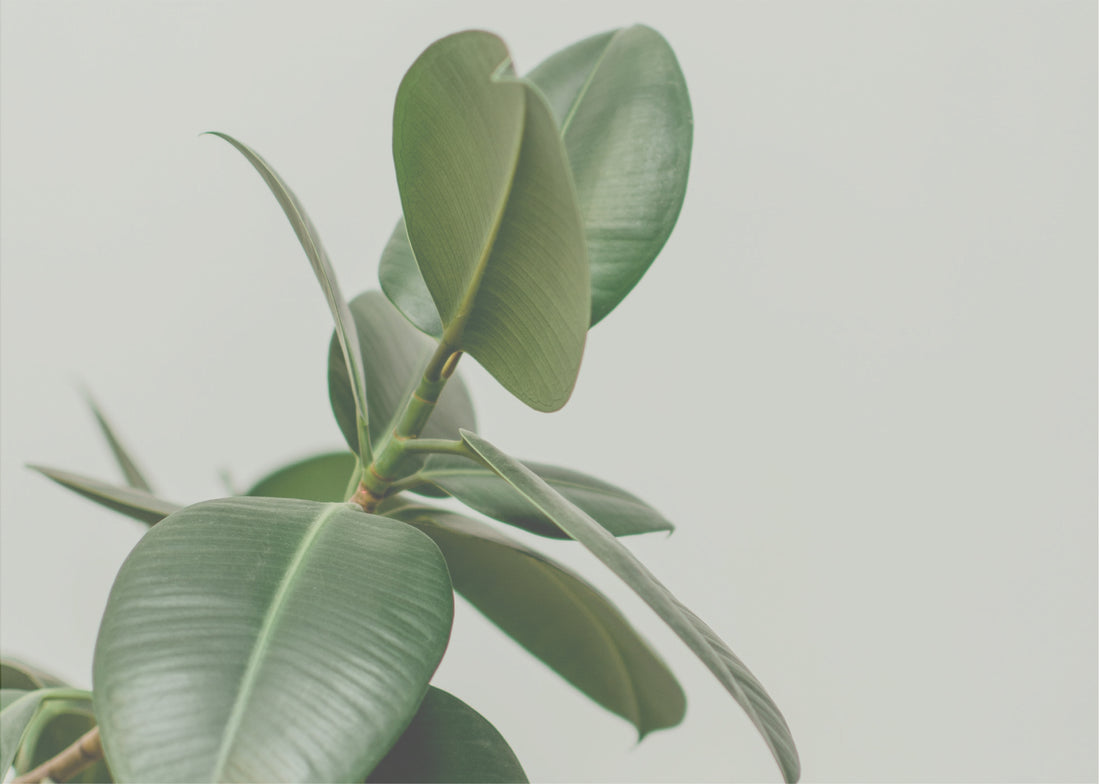As a company committed to knowing the actual people who help create our products, this obviously wouldn’t do. So we started researching rubber itself — speaking to rubber specialists, academics and consultants.
First things first: there are a couple of different ways to get rubber. The most common way today is to manufacture it using a bunch of chemicals created as byproducts of petroleum. We knew from the beginning that we could never do this. Our whole company is founded on values of environmental and ethical good, and besides, there’s just something off-putting and slightly offensive about wearing around petroleum shoes as a generation known for doing immense damage to the environment.
The other way, the way that can actually work with the environment as opposed to further destroy it, the way we source our rubber, is to collect it from trees.
There’s a rainforest tree called the Hevea Brasiliensis that, when its bark is tapped, releases a slow stream of white sap we know better as latex. The latex glides down a spout into a container over the span of several hours before the tree has been fully tapped, which gives the worker (because this is all done by hand) enough time to go around tapping potentially hundreds of trees in the early morning, before the first tree’s latex is ready to be collected.
As fascinating as that process was to us, we found the trees’ environmental impact even more compelling: as a species, the Hevea Brasiliensis has the capacity to offset 90 million tons of carbon per year. Studies have shown that rubber trees are almost as effective during photosynthesis as a virgin forest in consuming the products of fossil fuel burning, as well as producing oxygen.
Perhaps the best environmental attribute of natural rubber, however, is that it takes one-fourth the energy to produce it as compared to what’s needed for synthetic rubbers.
Learning this sourcing process involves two of our deepest values — the environment (trees) and people (by-hand workers) — is what led us to the jungles of Sri Lanka, a small island located just south of India.
One of the more difficult things about working in the jungle is the rain and humidity. If you aren’t used to it, your mind seems to drift in and out helplessly, just as the humidity smudges drawings from canvas.
Sofi and I had spent the day before traveling by bus, car, rickshaw and train to reach some of Sri Lanka’s lush jungle forests. Very green and wet, even at the end of the monsoon season, we could now appreciate the calm humidity of our surroundings — a far cry from the winding roads used to get us here.
The mornings in the jungle were our favorite time of the day: a few minutes first thing to reflect on the habitat, full of life and soul, into which we had been invited.
When we awoke before sunrise, the sounds of the stirring jungle just outside our door, we rested in the joy of our arrival: we were finally here, at the source of the materials we would use to make our new collection of rubber boots.
In a few hours’ time, the climate would return its oppressive heat and humidity as we walked through the dense green canopy, down a path just wide enough to fit a small car, to the first grouping of rubber trees. It was here, in the middle of the jungle, where we sought to gain an understanding of, and appreciation for, the environment in which we wanted to work. Engaging with these surroundings would determine just how authentic we could really be.
When we first began designing our rubber boot, we knew we wanted to use the best materials we could possibly find. Just as importantly, though, we wanted to know exactly where those materials originated. We needed to ensure that, as we developed the collection, we could bring about positive change by collaborating with the people and the environment that would bring our collection to life, rather than forcing our ideas and methods upon them. The aim was to deconstruct both the design and the process of making the boots — which led us much further afield than our drawing boards.
_______________
We had been directed to look into working in Sri Lanka by the Fair Rubber Association, a multi-stakeholder initiative that specializes in sourcing and development within rubber communities. The Association is a platform of cooperation between a small number of companies that trade in products made with Fairly Traded natural rubber, as well as representatives of civil society that support the expansion of Fair Trade as a concept.
The FRA was key in advising us in our approach to sourcing rubber: who to source from, who needs the most help and what the best practices would be in working with rubber communities and the environment.
Ensuring that our procurement actually helps people is, in theory, a relatively simple concept: we pay a Fair Trade premium for each kilogram of rubber that we source. This premium goes into a bank account managed by a committee of elected members from the rubber workforce. This Fair Trade premium is only to be used for the improvement of the working and living conditions of the rubber communities.
_______________
But we wanted our new collection to do more than check the environmental boxes.
A critical component to our company’s mission is changing how fashion items are actually crafted.
We wanted the creation of each pair of our boots to speak to an authenticity you just don’t find in most shoes and clothes bought off the shelves today.
That crafting started with our design, which came out of a six-month collaboration with a team in Switzerland, a country whose aesthetic tradition is known for its functional minimalism, as well as pattern designers, rubber specialists and a production team that handcrafts boots in Sri Lanka.
We started by stripping away all the unnecessary elements from the traditional rubber rain boot that had accumulated over years of mass production and little attention to detail.
We were left with a simple silhouette for us to build upon. We adjusted and fine-tuned the subtlety of the boot’s curves and lines until we found a shape we believed transcended time and geography, striking a balance of flexibility and rigidity, masculinity and femininity, function and form.
Which brought us to production. The process of handcrafting each pair of boots involves more than 20 different operations, from cutting each of the rubber pieces by hand to carefully placing them in such a way that creates the boot’s final form.
It’s through this process that we looked to fulfill our desire for a beautifully handcrafted good — luxurious not only as a unique piece in its own right but also in the passion and respect that has gone into its making, with regard to the craftspeople as well as the environment from which the material has been sourced.
_______________
We may be partial, but we like to think that the Rubber Boot goes strongly against the grain of the fashion industry. We aren’t selling a product cranked out in mass quantities through molds, flying off the production line according to how fast machines can work or laborers can stitch.
We hope to be able to bring back the texture of authenticity: an option of buying a fashion item that speaks of more than just colours and cuts. An option to find value, originality, and exclusivity through the very process involved in making each pair of boots.
 It shows, too — not just in the quality of the boots, but in the fair treatment of the team making them by hand. We’ve been able to provide our workers benefits like subsidized meals for breakfast and lunch, transport to and from work, a welfare shop from which workers can buy everyday household goods, food and drink at discount prices, insurance options, and access to loans for things such as housing, education, critical illness, and distress.
It shows, too — not just in the quality of the boots, but in the fair treatment of the team making them by hand. We’ve been able to provide our workers benefits like subsidized meals for breakfast and lunch, transport to and from work, a welfare shop from which workers can buy everyday household goods, food and drink at discount prices, insurance options, and access to loans for things such as housing, education, critical illness, and distress.
On a larger scale, the fair-trade premiums we pay in sourcing the natural rubber will go towards building a community center with internet access for the rubber workers — a decision made through the Fair Rubber Association in consultation with the rubber workers. This internet connection will provide a direct line of communication from rubber workers to the FRA and its members, allowing them to provide continual updates regarding needs, challenges and potentially exploitative circumstances.
These kinds of projects are tried and tested. To give an example, fair-trade premiums helped finance the building of a new bridge across a nearby river from where the rubber communities work. Generations of rubber workers had been asking for a bridge to be built, with the plan suggested more than 60 years ago.
Now that it’s built, the new bridge provides access to the local hospital that’s not only a lot quicker but cheaper — less than a third of the price that had to be paid for the old, long route.
And a nearby village benefits, too. Twice a year, their access to the main road gets flooded, isolating as many as 4,000 people. Now they can use the new bridge during the monsoon rains.
_______________
As the second line of goods coming out of Alice + Whittles, the Rubber Boot couldn’t make us more proud. We’ve poured an incredible amount of time and energy into discovering the root problems and opportunities in the fashion industry, and we’ve developed new value chains to create fundamental change for the people who collaborate with us to bring our goods to life.
We’ve met incredible people along the way. People full of talent and creativity and optimism and grit, who are more than eager and equipped to impact our vision just as much as we’re impacting their quality of life.
We know we’re a small brand, and we know that change doesn’t happen overnight.
But to see a problem and to do something about it, to track down answers and create solutions, to travel the world and meet people and co-invest in each other’s futures — this is the stuff our hearts beat for.
And to get to do that through fashion, through the creation of beautiful things made by incredible people across the world, is a gratitude and a joy we still haven’t found a way to describe.
But at the end of the day, we’re not too worried about that description. There are bigger issues at hand.

